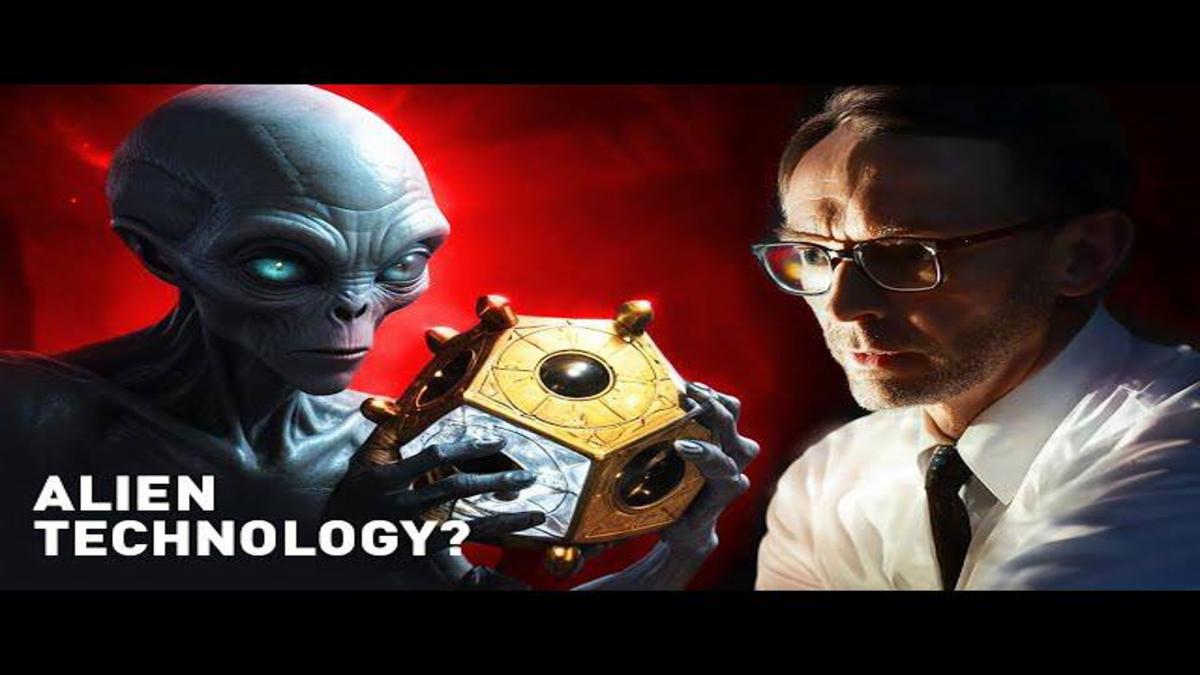Article Body
Could a distant alien civilization be sending us signals right now—signals we just don’t know how to read yet?
That question isn’t just sci-fi anymore. Over the past decade, scientists have radically shifted their approach in the search for extraterrestrial life. No longer satisfied with looking for basic biosignatures—like oxygen or methane—researchers are now chasing something far more telling: technosignatures.
These are signs of technology, not just life—things like radio waves, laser pulses, or even pollution in a planet’s atmosphere that could only come from intelligent civilizations. The search for technosignatures represents one of the boldest and most exciting scientific quests of our time.
And the breakthroughs are coming fast.
What Are Technosignatures, Really?
Technosignatures are any observable signs of advanced, alien technology. Think of them as cosmic fingerprints of intelligence. This can include:
-
Narrow-bandwidth radio transmissions (the original SETI method)
-
Infrared radiation from Dyson spheres (hypothetical megastructures to harness a star's energy)
-
Strange patterns in light caused by artificial satellites
-
Atmospheric gases that don’t occur naturally, like chlorofluorocarbons (CFCs)
The concept has gained real scientific credibility. In 2018, NASA officially sponsored its first workshop on technosignatures in over 25 years, signaling a renewed interest. Then, in 2020, the U.S. Congress funded $2 million for technosignature research—a small but symbolic step.
Why This Matters Right Now
This isn’t just about curiosity. As climate change, AI, and global tensions reshape Earth’s future, the idea of contacting a distant, potentially more advanced civilization prompts urgent new questions:
-
Are intelligent societies doomed to destroy themselves?
-
Is technological life common—or extremely rare?
-
Could we learn from the trajectory of another civilization?
Understanding whether others are out there may actually help us understand our own fate.
A Timeline of Breakthroughs (See Figure 1)
Figure 1: Key Moments in the Search for Technosignatures (2015–2025)
| Year | Breakthrough |
|---|---|
| 2015 | Breakthrough Listen launched with $100M funding from Yuri Milner |
| 2017 | Mysterious signal from Ross 128 sparks debate (later ruled out) |
| 2018 | NASA hosts first technosignatures workshop since 1993 |
| 2020 | Congressional funding allocated for technosignature research |
| 2021 | Chinese FAST telescope detects narrow-band signal (later dismissed) |
| 2024 | James Webb Space Telescope begins scanning for artificial pollutants in exoplanet atmospheres |
Real-World Example: Breakthrough Listen
Funded by tech billionaire Yuri Milner and backed by Stephen Hawking, the Breakthrough Listen project is the most comprehensive search for intelligent life ever mounted. It uses some of the world’s most powerful radio telescopes—including the Green Bank Telescope in West Virginia and the Parkes Observatory in Australia.
Since its launch in 2015, Breakthrough Listen has collected over 1 petabyte of data. While no confirmed alien signal has been found yet, the project recently released open-source software for public participation, leading to an explosion of crowdsourced discoveries.
“The next signal we receive might not be an accident—it might be a beacon,” says Dr. Andrew Siemion, principal investigator of Breakthrough Listen.
Technosignatures vs. Biosignatures: What’s the Difference?
Most people are familiar with biosignatures—signs of life like carbon, water vapor, or microbial fossils. These are important but can’t tell us if a planet has intelligent life.
Technosignatures go a step further. They imply not just life, but civilization—with tools, communication, and perhaps the desire to connect. Some scientists now argue that technosignatures may even be easier to detect than biosignatures, especially with instruments like the James Webb Space Telescope or future observatories like the Habitable Worlds Observatory.
What Would a Technosignature Look Like?
Imagine you're an alien looking at Earth from 100 light-years away.
You wouldn't see skyscrapers or cities. But you would detect:
-
FM radio and TV signals escaping into space
-
Atmospheric traces of nitrogen dioxide and chlorofluorocarbons
-
A glowing "night side" of Earth due to artificial lighting
-
Irregularities in light reflection caused by satellites and space junk
Now flip that scenario. If we spot those signs on an exoplanet, we may be seeing them.
The Scientific Debate: Are We Looking the Right Way?
While interest in technosignatures is growing, the scientific community is still split. Critics argue:
-
There’s no guarantee other civilizations use the same technology
-
Aliens might use quantum communications we can’t detect
-
Civilizations may destroy themselves before ever making contact
But supporters point to our own trajectory. Earth has been radiating radio waves into space since the 1930s. That means 90 light-years in all directions are now bathed in our presence. If aliens are out there—and listening—they may already know we exist.
The Fermi paradox: Where Is Everyone?
Physicist Enrico Fermi famously asked in 1950, “Where is everybody?”
Despite the vastness of the universe—over 100 billion planets in our galaxy alone—we’ve seen zero confirmed evidence of intelligent life.
Possible explanations:
-
Intelligent life is extremely rare (the “Great Filter” hypothesis)
-
Civilizations self-destruct before reaching interstellar capabilities
-
Aliens are deliberately avoiding us
-
We’re simply not listening in the right way
The search for technosignatures could help resolve this haunting paradox once and for all.
Cultural and Psychological Impact
Contact—even just confirmation that someone is out there—would change everything. Philosophers and psychologists speculate it could:
-
Shift humanity’s self-image and place in the cosmos
-
Trigger religious or existential crises
-
Unify nations with a new, shared identity as “Earthlings”
-
Spark innovation in global communication and ethics
Sociologist Dr. Kathryn Denning notes: “Knowing we’re not alone would alter every narrative humans tell about themselves.”
What’s Next? New Tools, New Hopes
In the next few years, the following advancements may finally crack the silence:
-
NASA’s Habitable Worlds Observatory (2030s): Designed to image Earth-like planets and analyze their atmospheres
-
SETI’s LaserSETI: A project to detect brief, high-powered laser pulses across the sky
-
AI-powered analysis: Projects like IBM’s Watson are now being used to sift through radio data for unusual patterns
Moreover, private and international collaborations—from China’s FAST telescope to India's Giant Metrewave Radio Telescope (GMRT)—are scaling up detection capabilities globally.
Key Takeaways
-
Technosignatures are signs of alien technology, not just life.
-
They're gaining scientific credibility, with funding from NASA and global institutions.
-
Tools like the James Webb Space Telescope and Breakthrough Listen are transforming the search.
-
Detecting technosignatures could solve the Fermi paradox and redefine our understanding of life in the universe.
-
The social and psychological impacts of finding intelligent life would be profound.
FAQ
Q: What is the difference between biosignatures and technosignatures?
A: Biosignatures are signs of basic life (like oxygen or microbes), while technosignatures are signs of intelligent life and technology (like radio waves or pollution from industry).
Q: Have we found any technosignatures yet?
A: Not definitively. Some mysterious signals (e.g., the "Wow!" signal, or the 2021 Chinese detection) have turned out to be false alarms or interference.
Q: Can we contact aliens directly?
A: Projects like METI (Messaging extraterrestrial intelligence) have tried, but it's controversial. Many scientists worry it could be dangerous.
Q: What if alien civilizations are more advanced than us?
A: That’s likely. They may have tech we can’t detect—or they may view us the way we view ants. But it’s also possible we’re among the first.
Q: Why does this matter now?
A: With growing climate and geopolitical risks on Earth, understanding how other civilizations evolved—or ended—could offer vital insights for humanity’s survival.
Final Word:
As we tune our instruments toward the stars, we’re not just listening for others. We’re trying to understand ourselves. The search for technosignatures is no longer fringe science—it’s a bold new frontier in humanity’s story. And perhaps, just beyond the static, someone is waiting to be found.


Comments